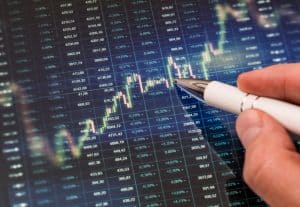 Exchange traded funds (ETFs) have the highest percentage of dark trading in terms of overall volume traded compared to other asset classes, a report from the EU markets watchdog has shown.
Exchange traded funds (ETFs) have the highest percentage of dark trading in terms of overall volume traded compared to other asset classes, a report from the EU markets watchdog has shown.
The trend was revealed as part of an analysis on the use of waivers and deferrals under European regulations in 2019 by the European Securities and Markets Authority (ESMA).
Looking at total turnover executed under a waiver in relation to total turnover, ETFs were found to have the highest amount of turnover traded in the dark at 58%. This was followed by depositary receipts with 17%, equity-like instruments at 13%, and shares at 12%.
The activity was executed mainly under the large in scale (LIS) waiver, which accounted for 91% of total ETF turnover with the remaining volume split between the OMF (order management facility) waiver and NT (negotiated transaction) waiver.
The LIS waiver allows traders to execute in dark venues without pre-trade transparency if transactions are over a certain size. Trades exceeding the LIS threshold avoid the double volume cap mechanism, which introduced under MiFID II to restrict the level of dark trading.
The LIS waiver is the most frequently used, according to ESMA’s report, and ETFs accounted for roughly 64% of the total turnover executed under the LIS pre-trade transparency waiver. In terms of the total number of transactions executed under the LIS waiver, trading in shares accounted for 87% followed by ETFs at 8%.
“These findings show that despite the arbitrary nature of the ESMA caps, the market has found a way to put together larger trades, which actually benefit from the LIS waiver,” Stephen Kelso, head of markets at broker ITI Capital, commented on the findings.
“As for ETFs, the reality is that the vast majority of ETF trading, outside of the US, is carried out away from public exchanges. This presents an opportunity for dark trading venues to benefit by trying to get as much of this flow on their order books as possible.”
He added that the UK’s Financial Conduct Authority’s recent decision to lower the LIS threshold for EU-listed stocks could see the buy-side look to trade stocks in large size on UK venues in post-Brexit Britain.
ESMA’s report stated that the UK submitted the largest number of waiver notifications in 2019, accounting for 37% of the total received by the European regulator. Germany and Spain followed with 9.5% each and the Czech Republic and the Netherlands accounted for around 8% of the total.
“No major surprise to see the UK at the top of the tree when it comes to waiver notifications as this is simply a by-product of the traditional role market-makers have played in providing liquidity,” Chris Hollands, head of Europe and North America sales at TradingScreen, commented. “The fact that the highest percentage of volume appears to be in ETFs reinforces UK market makers’ key role as a dominant provider of liquidity in this instrument class.
“It is important not to overlook the role technology is playing not only in providing access, but also the convenience and interoperability of trading functionality across a vast array of different liquidity sources.”
According to the waiver descriptions that ESMA received, trading systems that formalise negotiated trades are the most commonly used for waivers with 34% of the cases. This was followed by continuous order books at 23%, other systems such as continuous order books combined with auctions or midpoint functionality at 21%, and periodic auctions at 9%.
“Ultimately, making available all the liquidity sources in an interactive manner gives traders the best possible chance to seek out the highest quality liquidity to meet the exacting best execution requirements of a post MiFID II world,” Hollands added.